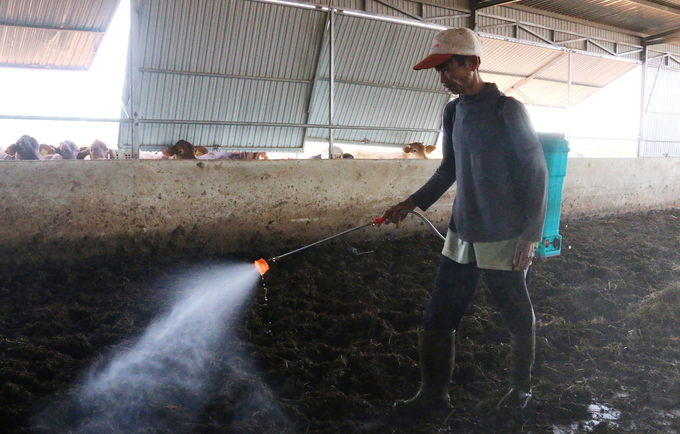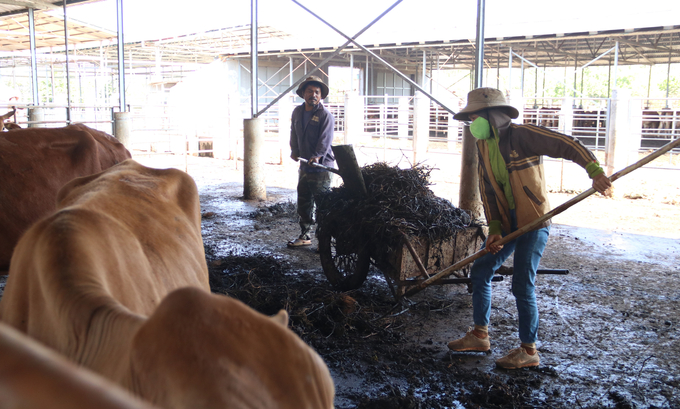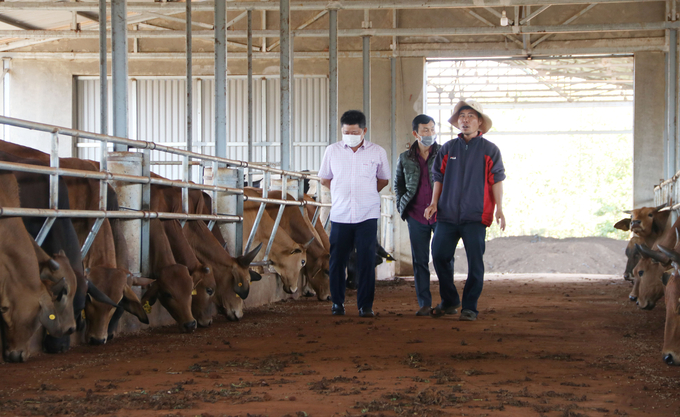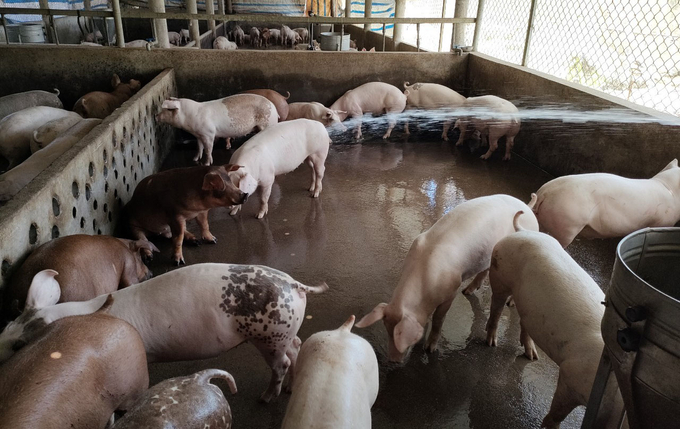
The county-level veterinary system in each province in the Central Highlands is unique and creates difficulties in disease prevention and control. Picture: Minh Qui.
Every place has a style
According to our research, there are no more district-level veterinary and livestock stations in the merged province of Dak Nong. This has caused many difficulties in building a disease security system in recent years.
In Kon Tum Province, the animal husbandry and veterinary health stations were delegated to the county and city people’s committees for management. So far, the people’s committees of the districts and cities have merged animal husbandry and veterinary stations, clearly defining the functions and tasks for each agency and unit.
Specifically, the Ministry of Agriculture and the Ministry of Economy have the function of state administration in the field of animal husbandry and veterinary medicine; The service center for agriculture has the task of organizing, implementing and performing the tasks of animal husbandry and veterinary medicine.
At the municipal level, there is a veterinary staff that oversees and implements tasks related to the prevention and control of animal diseases in the region.
In recognition of the fact that in Dak To District the veterinary station has been integrated into the Agricultural Service Center and only one full-time veterinary officer is now employed.
Ms. Le Thi Hoa, veterinarian of Dak To district, said that the entire district currently has only one veterinary staff, while the workload is very heavy, both in direct management of livestock facilities and in carrying out administrative work, disease prevention…none Time to study documents.
According to Ms. Hoa, as part of disease prevention and control, veterinary staff must also be on duty to respond promptly when an epidemic occurs in the region, including day and night.

According to the local authorities, the current basic veterinary system should not have many shortcomings in disease prevention. Picture: Tuan Anh
In Gia Lai Province, the organization of veterinary services is currently not in line with the provisions of the Veterinary Law, resulting in lack of synchronicity, fragmentation and neglect in some stages of disease prevention and control from the provincial level down. District.
In addition, the reduction of the veterinary-animal husbandry title at the community level has led to many difficulties in ensuring disease security in some localities. In recognition of the fact that veterinary stations have also been merged into the Agricultural Service Center in Kong Chro District.
Kong Chro District Agricultural Service Center director Mr Nguyen Quang Quoc said there are three full-time veterinarians in the district and each municipality has a junior vet who mainly serves small and medium-sized farms in the region.
In principle, the medical staff can continue to cope with the workload for normal disease prevention. However, when an epidemic of a complicated nature occurs, it is difficult to respond. Not only is the force still small, but the functions and duties of the veterinary staff do not meet the requirements.
Mr. Quoc said the government has also implemented a project to strengthen veterinary staff at the grassroots level, including training and capacity building… If this project is implemented, the animal system will ensure medicine well in preventing diseases in livestock.

Despite efforts to coordinate among themselves, communities in the central highlands still face many challenges in disease prevention and control. Picture: Minh Qui.
When the epidemic hits, the difficulties pile up
Mr. Doan Thanh Mai, deputy director of the Kon Tum Province Animal Husbandry and Veterinary Medicine Subdivision, said that with the shift of the veterinary system from the district to the municipal level, the implementation of tasks has been made for the first time. The establishment of disease-free areas in animal husbandry is also associated with certain difficulties.
However, with the constant attention and guidance of the provincial people’s committee, the heads of the Ministry of Agriculture and Rural Development, the people’s committees at all levels in the organization, implementation and implementation, on the other hand, to strengthen the capacity of the grassroots veterinary network. .
Accordingly, the provincial specialized agencies organize numerous training courses every year to promote and improve the professional performance of civil servants, district officials and municipal veterinary personnel, while closely coordinating between the provincial specialized agencies and grassroots agencies.
“To date, the provincial-to-grassroots veterinary system is basically still functioning effectively, ensuring disease prevention and control capability in livestock herds. In order to keep up with the development of livestock farming in Kon Tum Province in the coming period, basic veterinary medicine at all levels and sectors must invest in human, professional skills and facilities to meet the development needs of high-tech livestock farming,” said Mr May.
According to Mr. Nguyen Viet Vui, director of the Agricultural Development Subdivision of Dak Nong Province, the organization of the veterinary system in the province has made arrangements for consolidation based on the implementation of Resolution No. 18-NQ. / TW and Resolution No. 19-NQ/TW of October 25, 2017 of the Sixth Conference of the 12th Party Central Committee.
Specifically, the People’s Committee of Dak Nong Province issued Resolution No. 1280/QD-UBND on December 28, 2018, which improves the status quo of animal husbandry and veterinary medicine, cultivation and plant protection, quality management of agricultural and forestry products, and fisheries in the sub is merged -Department of Agricultural Development.
Agricultural technical service centers will be set up in the counties and townships under the people’s committees of counties and cities on the basis of merging the status quo of the animal husbandry and veterinary stations, the cultivation and plant protection stations, and the agricultural extension stations.

The central highlands are currently facing many difficulties in disease prevention in livestock. Picture: Tuan Anh
According to Mr. Vui, after the merger, the functions of state administration in general and animal disease prevention and control in particular have currently been transferred to the Ministry of Agriculture and Rural Development and the county and city agricultural technical service centers. The prevention and control of animal diseases in the districts and towns assigned to the Agricultural Technical Service Center has so far achieved initial success.
However, there are still some difficulties in implementing, directing and reviewing expertise from provincial to district technical bodies, which has many steps to go through. Animal diseases are not synchronized between the places in the province, especially the disinfection and vaccination works according to the provincial plan.
Mr. Nguyen Viet Vui, Director of Agricultural Development Subdepartment of Dak Nong Province: “When the epidemic occurs, the dispatch of veterinary personnel and equipment of the agricultural technical service center from district to district to support the epidemic control is not done as before. In addition, since the implementation of the regulation and consolidation of the veterinary system in the province, the central government has not yet issued specific guidance documents or supplemented guidance circulars so that municipalities can have a basis for implementation. consistently implemented across the province.”

